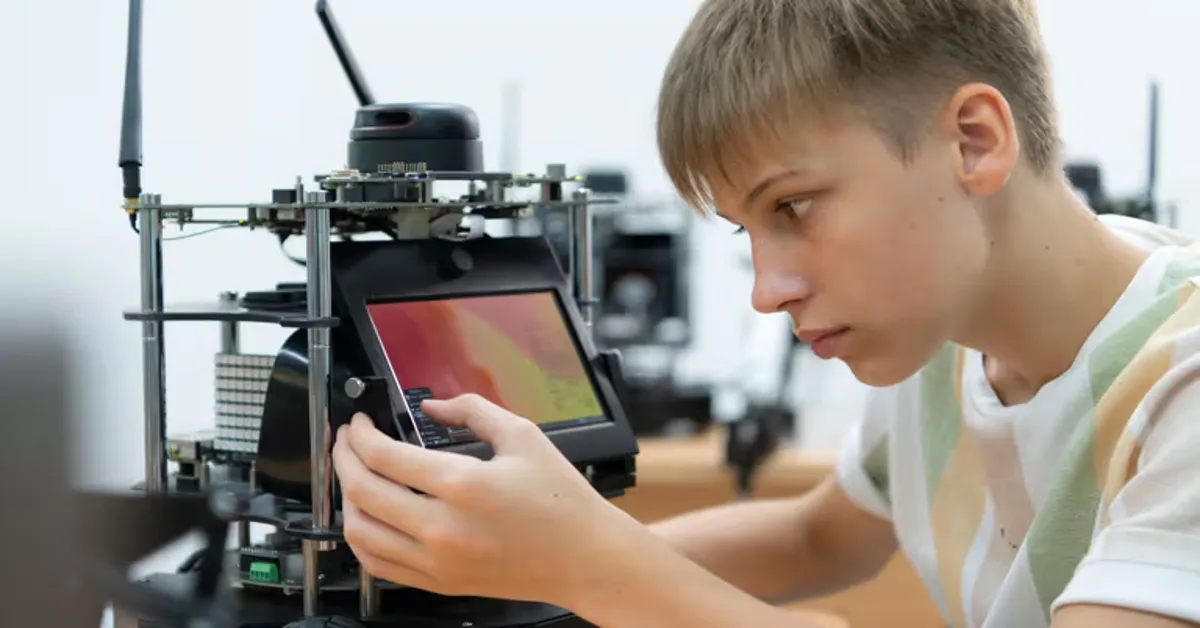The adaptability and flexibility of Raspberry Pi have made people around the world interested in it for hobbies, teaching and learning purposes and development. Another great thing about Raspberry Pi setups is that they support touching monitors, which create a number of options for touch applications and projects. By integrating Raspberry Pi Monitors with touchscreen functionality, users can create responsive, hands-on interfaces that make projects more engaging and practical for a wide range of uses.
In the Education sector, Raspberry Pi monitors can be used in teaching aids and other creative installations which somehow require the use of touch screens for portability and touch sensitivity.
1. Enhanced User Interaction for Customized Applications
Raspberry Pi monitors with touch capability are particularly advantageous in that they provide an extra level of interactivity. Standalone monitors provide no feedback besides the display, while having a touch screen monitor for a public map means people can directly work on it – which is much needed for projects with a lot of touch points.
Whether you need an application for learning, a control panel over your home, or perhaps a simple game, a touchscreen Raspberry Pi monitor can enhance the experience.
- Touchscreen capabilities enable users to:
- Move on the menus as you click them with the tap.
- Operate the device through entering the commands and do not require a keyboard or any other pointing device.
One of the biggest advantages with allowing users to interact with applications through touch, is that it gives the developers an opportunity to design systems that are both functional and easily operated, which makes Raspberry Pi a versatile tool for projects that seek to implement simple interfaces.
2. Compact and Portable Design for Flexible Setup
Although many monitors are made to be portable, Raspberry Pi monitors, including touchscreen ones, are relatively small and light. Such portability can be used by developers to design mobile applications and devices that can be used in various places. Organized by its size, the small format of Raspberry Pi monitors improves versatility, enabling projects to be incorporated into locations that wouldn’t accommodate bulky monitor sizes.
Some practical benefits of compact touchscreen displays include:
- Ease of mobility: Modular for working on the go or for external events and functions
- Low-profile designs: Perfect for installation in small areas or as digital signage.
- Lightweight form: Portable enough yet without compromising structural and operational feasibility.
For instance, using Touchscreen Portable Monitors with Raspberry Pi is beneficial for interactive installations or small-scale digital displays, where a sleek and lightweight monitor adds to the project’s usability without compromising on quality.
3. Educational Applications for Engaging Learning Experiences
Homes and schools have adopted the touchscreen Raspberry Pi to monitor lessons as it offers an interactive way of learning. These monitors facilitate the way teachers can present new concepts in an interactive lesson, suitable for students in all fields.
During class instructions or homeschooling, projects that involve interactive displays from Raspberry Pi are some of the best teaching aids one could ever imagine.
Educational applications can include:
- Numerical exercises where the student is able to compile, run and engage with programs at first sight
- Math and science animations to support technical concepts.
- Teaching games which the students can manipulate in an exploratory fashion.
Students can use an interactive touchscreen to experiment with coding concepts, test out small programs, develop a visualization or simple game as a way of illustrating the roles of coding ideas.
4. Ideal for Creative and Art Projects
For artists and designers Raspberry Pi monitors with touch capabilities are reliable and cost-effective tools for technological art and multimedia applications. The basic idea here is that touch screen interactive formats, where users are able to draw, select and move objects on screen, are highly valuable in creative projects. This functionality is mostly valuable for exhibits where the audience engagement is important like in museums, galleries or other creative spaces.
Creative applications of touchscreen Raspberry Pi monitors include:
- Digital sketching: Enables artists to make their drawings directly on the screen.
- Interactive exhibits: Hold the attention of the viewers by making them be able to interact with components on the screen.
- Multimedia projects: Multi-sensory and has aspects of sound, graphics, and performance.
The main advantage of touchscreen displays is that artists are able to create installations that are meant to be touched, thus expanding the audience of young people to experiment with art projects.
5. Practical Use in Smart Home and DIY Projects
Raspberry Pi monitors with touch capabilities work great for smart home applications, where one can easily put together custom interfaces for various gadgets and observe data. They let homeowners control the lighting, security or entertainment systems within their homes and give them a true smart home feel. Raspberry Pi’s open source capability and touchscreen functions can allow for the creation of easily usable home automation systems.
Common smart home applications for touchscreen Raspberry Pi monitors include:
- Control panels for home automation: Freely control the light and the temperature and numerous other factors.
- Security monitoring interfaces: Show the live camera feeds or alert notification
- Entertainment hubs: Pause, resume, navigate through tracks and playlists and select different streaming options
Because most of these interfaces can be developed based on the particular requirements of a home, DIY enthusiasts are able to develop convenient and practical solutions for their homes.
6. Simplifies Prototyping and Testing for Developers
Especially for developers who are involved in a prototype or test project, a Raspberry Pi touchscreen monitor is an indispensable tool. The interactive screen enables users to use the application and get immediate feedback and, if necessary, to modify something on the spot. This capability is most advantageous in IoT, robotics, and hardware-related applications where fast feedback and convenient testing are highly valuable.
Using touchscreen Raspberry Pi monitors for prototyping provides:
- Real-time feedbacks about features of the user interface
- Flexibility to quickly switch between software or hardware settings
- A main positive aspect of its design for rapid testing of various aspects of the application.
This is specifically so because having a touchscreen interface for testing helps developers to come up with a more polished final product by making improvements in successive iterations.
7. Compatibility with a Range of Software Applications
The majority of the Raspberry Pi monitors have a touchscreen and the flexibility of the software means that it can be used in various fields. Both these monitors prove effective for the simple kiosk software and for the more complicated customized software for meeting numerous development objectives.
Key software applications compatible with Raspberry Pi touchscreen monitors include:
- Educational tools: Best used for applications that are to do with coding, mathematics, or any other science.
- Multimedia software: Supports video playback function, audio, and interaction support
- Business and industrial applications: Serves useful in controlling machines, systems or processes.
Because of the high compatibility with numerous software and interfaces, Raspberry Pi monitors prove to be very handy for many projects by developers and users in relation to their interactive goals, particularly for the aforementioned applications.
Conclusion
The employment of Raspberry Pi monitors for interactive touchscreen applications has proved to provide numerous benefits for a large number of applications. It increases user interaction, portability, and brings practical application for education, art, smart home, and development.
From teaching aid to art projects, from signage to home automation, Raspberry Pi touchscreen makes a very versatile human-computer interface that is easy to build, appeals to the user’s senses as well as being practical.







